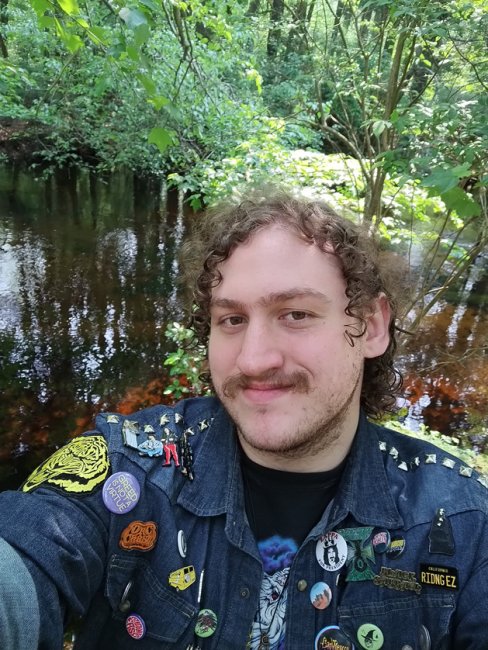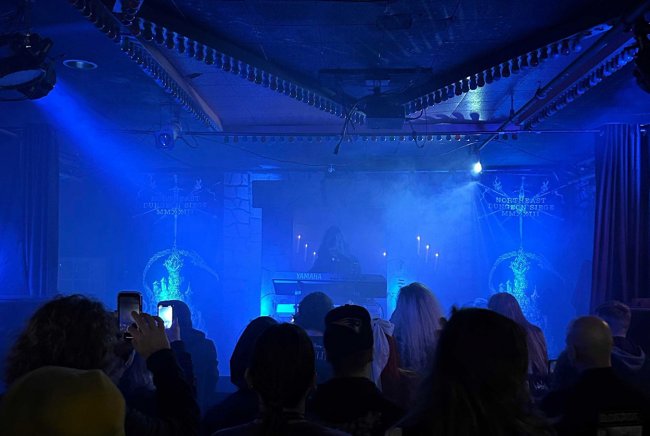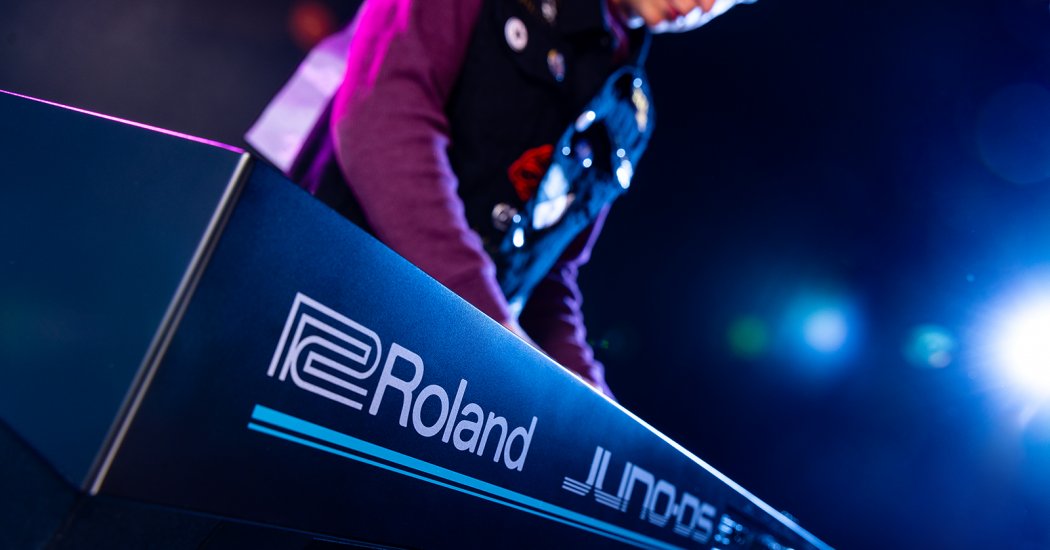
Subgenres have always been a vital element of the musical world. Their experimental, creative nature constantly expands the reaches of multiple genres, and as a result, they’ve guided a large portion of musical evolution for decades. However, as you might expect, their lesser-known, niche personalities often leave them in the dust of mainstream options. Despite their inarguable influence, subgenres primarily exist as an eclectic selection of music that most casual listeners will, unfortunately, never listen to.
Deep within the annals of dark-metal history lies one such subgenre, known for its mysterious and fantastical character. Laden with atmospheric, medieval compositions and dark themes, it has become popular among modern-day RPG fans, black metal connoisseurs, and curious listeners. What is the name of this mystifying microgenre? Dungeon synth (DS). Though its name seemingly has nothing to do with metal, rest assured — DS harnesses an endarkened history and dedicated “kvlt” following that’s far more complex than what meets the eye. So, grab your swords and pitchforks! From dungeon synth’s ethereal ’90s roots to its modern cassette-tape revival, join us as we explore the dark and otherworldly lore of this captivating genre you’ve (probably) never heard.
- A New Face of Black Metal
- Emerging from the Shadows: A DS Revival
- The Son of a Bard: The Artist’s Perspective
- Northeast Dungeon Siege MMXXIII
- Tones of the Trade
A New Face of Black Metal
Though an exact date for the emergence of dungeon synth has never been established, it’s widely believed that the genre was born in Scandinavia under the wing of the second-wave black metal movement, which occurred in the late 1980s. In between fast-picking styles, heavy drum progressions, and raucous vocals, black metal (BM) of this era often incorporated instrumental jaunts as preludes or interludes, typically featuring pseudo-medieval, fantasy-based motifs. (Think “Rime of the Ancient Mariner” by Iron Maiden with synthesizers instead of guitars.) Around 1990, experimental artists began incorporating full-length tracks of these synth-driven incorporations into their work, adding a new atmospheric element to mainstream BM releases. A notable example is Burzum’s self-titled debut album, cited as the first time a pre-eminent black metal artist released a record containing both BM and instrumental ambient tracks. In time, this new style of music evolved from full-length track inclusions to entirely ambient albums, which are retroactively deemed “dungeon synth” by contemporary fans and artists.
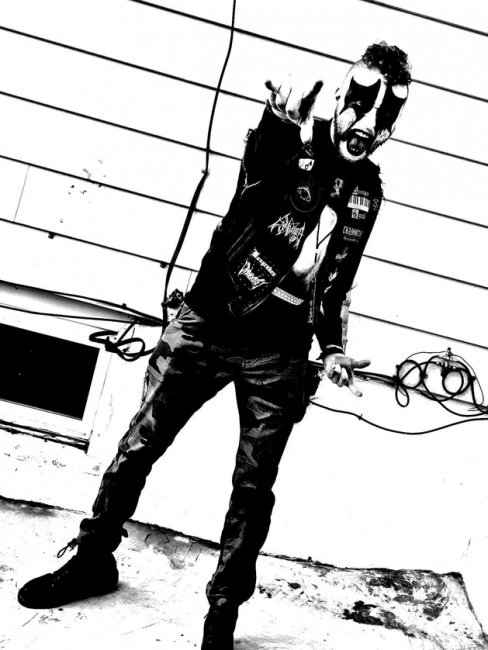
Like most emerging subgenres, early samples of dungeon synth are scarce and mostly found within the discography of already established musicians. Examples include the solo work of Mortiis, whose DS production appeared shortly after he departed from the reputable Norwegian black metal band Emperor, and the aforementioned Burzum (previously of black metal band Mayhem) — both of whom are consistently cited as dungeon synth’s most reputable forefathers. The following are excellent examples of the aesthetics and sound of early DS releases:
In due time, DS releases became more common among a wealth of various black metal artists. Despite its rapid growth, dungeon synth only subtly affected black metal record culture. In fact, it quickly integrated itself into the traditional practices of dubbed tape releases featuring DIY J-card design, 8-track lo-fi recording, and anonymous distribution. Thus, 1993 and onward saw the budding growth of dungeon synth alongside its black metal companion, eventually making a name for itself as a significant aspect of black metal culture by the decade’s end. Years of steady decline in DS popularity in the early 2000s, however, left the community highly untouched for years to come. Although it was not wholly cast aside from the music world, dungeon synth would not see the same momentum it gained in the 1990s until its sudden revival almost 20 years after that.
Emerging from the Shadows: A DS Revival
Despite DS’s tapered success during the turn of the 21st century, the early 2010s brought with it a wave of DS popularity, eventually becoming the dungeon synth community today. The reasoning for its sudden success is unclear, but there is no doubt that the largest portion of dungeon synth releases has been created from this point forward. There is, however, a notable difference between the dungeon synth of years past and today’s releases. Unlike the traditional dungeon synth foundation of black metal culture, dark themes, and anonymous lifestyles, several (but not all) modern dungeon synth artists toy with fantasy often associated with popular video games and tabletop RPGs, like Dungeons & Dragons. Traditional artists, like Mortiis, have shied away from contemporary gaming influences, as the genre was never founded nor conceived upon by these themes. However, the modern community has primarily accepted these new motifs with open arms.
Modern dungeon synth is also unique, covering a more comprehensive range of sounds than traditional DS. While earlier tracks had their flair and were accompanied by varying tempos, tones, and the like, some contemporary dungeon synth releases are entirely new genres on the periphery. Tonal changes include more instances of high-fidelity production, software synthesizers, and fantastical, immersive themes that have expanded dungeon synth far beyond its traditional boundaries. From short, sampled stabs to booming percussion to hour-long atmospheric pads and everywhere in between, there’s a style of dungeon synth for virtually any listener to appreciate.
Below are (some of) my favorite modern dungeon synth releases. Note the differences in sound and appearance compared to each other and the early DS examples shown above.
“Adventure Calls Thy Name” by Lone Sentinel conjures up traditional composition on a modern tonal palette. The imagery is instantly representative of high-fantasy themes.
“The Grey Cliffs of Solitude” by Coniferous Myst is another pseudo-traditional record emphasizing lo-fi production and a more ambient approach to melodics. The album art takes a more historical approach.
“Solace Among the Spruce, Sorrow Among the Snow” by Snowspire is dungeon synth in its purest ambient form: pads, atmospheres, and environmental artwork.
“Demo XV (In Sleepless Search)” by Ghoëst is slow yet energetic dungeon synth featuring stubby pads and powerful percussion. (This form of DS is also referred to as “dungeon doom”).
As you can probably tell, the sounds and inspirations surrounding dungeon synth have shifted slightly throughout the years — although they do continue to hold a taste of their foundational black metal roots. Likewise, contemporary releases still practice traditional DIY standards, and many artists distribute their albums, EPs, and demos in cassette form. Many notable DS record labels, such as Ancient Meadow Records, Realm and Ritual, and Out of Season, work closely with artists to manufacture and sell their new dungeon synth releases in commercial quantities.
The ever-growing number of dungeon synth artists, labels, and fans continues to impact dungeon synth today. Community events, concerts, and even festivals are held in a higher capacity than ever before in DS’s history, and they continue to increase in frequency. There’s no telling where dungeon synth is headed next regarding its creativity and worldwide popularity, but rest assured; the genre is not going away anytime soon.
The Son of the Bard: An Artist’s Perspective
Dungeon synth is home to an incredible number of artists, from the MIDI-inspired rhapsodies of Chaucerian Myth to the pensive atmospheres of Woodland Meditation. Although they deliver to a similar fanbase, each artist offers something extra in the way of uniqueness and inspiration.
Such is the case with New Jersey native and proprietor of the Baerdcyn (pronounced BARD-koon) project Glenn Bokay, who gave me some insight into his enchanting creation process. Unlike several traditional DS artists, Baerdcyn relies heavily on using physical instruments rather than digitally produced sounds, making it a completely distinct project among countless others. The result is a neo-folk-inspired pseudo-genre Bokay likes to call “Dungeon Synth Unplugged.” Personally, Baerdcyn’s creations are among some of my favorite dungeon synth releases to hit the scene in recent years.
Bokay, like many others, found his home in the dungeon synth community via a lifestyle of ambient music appreciation and tabletop RPG gaming. When asked what his favorite part of the DS community was, he was quick to answer: the camaraderie shared by musicians and fans, as well as the escapism that goes hand in hand with the genre. His inspiration primarily stems from the feedback and growth within the community and a personal appreciation for the culture. A musician since the fifth grade, Bokay created his first Baerdcyn album in 2020 called The Tale of Bjorngar, and he continues creating music today. Instruments used in the Baerdcyn project include (but are not limited to): the lute, Celtic harp, lyre, mandolin, and Irish tin whistle.
Bokay favors his recent albums Bardic Wizard and Naegling due to the composition and specific instrumentation used, and I must say — I don’t blame him. Below is an example of Baerdcyn’s music-making skills and, personally, my favorite track, “The Early Mist.”
Northeast Dungeon Siege MMXXIII
Since 2018, Worcester, Massachusetts, has been the site of dungeon synth’s most prolific annual event: the Northeast Dungeon Siege (NEDS). Originally an independent meeting between artists residing in New England, NEDS has since evolved into a full-scale festival for worldwide DS musicians, fans, and vendors alike. Having been involved in the community for quite some time, I was fortunate enough to make the trip for the first time to attend this year’s gathering, NEDS MMXXIII.
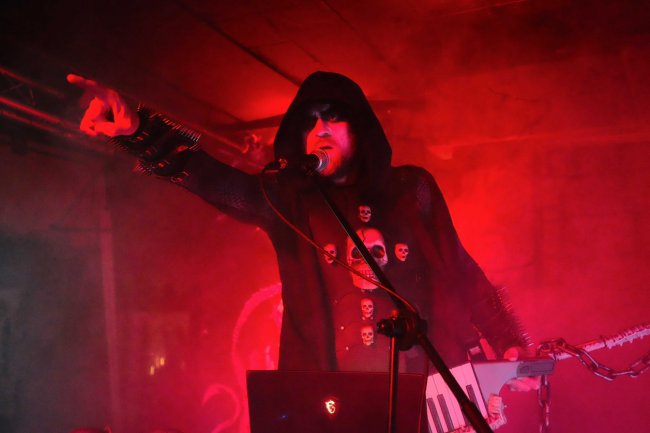
NEDS MMXXIII was the first in-person Siege since the COVID-19 pandemic (MMXX and MMXXI were hosted online, while MMXXII did not take place). As a genre that mostly communicates via Bandcamp and other social media outlets, dungeon synth in-person events are a chance to socialize with friends and colleagues you otherwise are unable to meet.
More than 20 artists were part of this year’s lineup, including Erythrite Throne, Jenn Taiga, Redhorn Gate, and Shrouded Gate, to name a few. From 8PM until the late hours of the night, each artist had a moment in the spotlight to deliver — in person — their most successful tracks from the previous year. Previously mentioned labels, such as Ancient Meadow Records and Realm and Ritual, held vending booths to distribute tapes, vinyl, patches, and other merchandise. The festival relies heavily on props, decorations, and costumes to assume the atmosphere of an actual dungeon synth venue. Faux stone structures, lit sconces, and fog machines were used, resulting in a completely immersive experience.
Northeast Dungeon Siege also provides daylong tabletop RPG gaming sessions and events before the concert starts. This, coupled with the camaraderie and the nightlong ambience of dungeon synth, truly makes NEDS feel like a once-in-a-lifetime opportunity. Despite its ultra-niche following, these events demonstrate how committed these artists, vendors, and fans are to their craft.
Tones of the Trade
As a genre that started on cheap digital keyboards and a penchant for raw cassette recordings, dungeon synth isn’t necessarily difficult to conjure for yourself. All contemporary dungeon synth artists will agree, however, that the most important parts of your compositions lie in your tones of choice. Below are a few recommendations for gear if you’re interested in giving DS a try for yourself!
Casio CT-X700 61-key Portable Arranger Keyboard
The Casio CT-X700 61-key portable arranger keyboard is a perfect beginner instrument for making killer dungeon synth tunes. Truthfully, all you need in terms of tonality and overall sound quality can be found within its expansive 600-instrument voice bank. I use the CT-X700 and have successfully conjured up authentic DS tracks when pairing the instrument with DAW tape emulation and looping control. Another standout feature is Casio’s proprietary effects bank, which can add chorus, reverb, delay, and flanger to your tones for that classic digital effects texture. You can even split instruments and layer two voices on top of each other, providing even more creative opportunities.
Roland JUNO-DS Series
Synthesizers from the Roland JUNO-DS series are among the most popular synths used by modern dungeon synth artists. Looping is a significant part of dungeon synth, and the JUNO-DS is an easy way to add looping and sequencing capabilities to the stage in a single device. It’s also a host of nearly endless tones, with more than 1,000 downloads available for free from Roland’s Axial website. Effects, comfort, ease of use — it’s all there. I’m thoroughly convinced that the “DS” in JUNO-DS stands for dungeon synth — it’s that good.
Notable DS Software Tools
In the digital age, quality software instruments and effects are imperative to making a professional release. Listed below are some favored products that DS artists and I use consistently. Because of dungeon synth’s close relationship with lo-fi tape production, the Klevgrand DAW Cassette Tape Deck Emulation plug-in is a must for getting an authentic vibe. Likewise, a vintage-style digital reverb, such as the Universal Audio UAD Lexicon 224 digital reverb plug-in, is a great way to get the pads and atmospheres of dungeon synth a truly open, immersive feel. There’s even a system noise control and decay option on this UA plug-in to enhance the vintage-like qualities of your mix. Finally, regarding instruments, the Arturia Pigments 4 software synthesizer is an absolute must. Whether you want to pave your way to sounds via an analog, a wavetable, or a sampler synth, Pigments 4 has every control to get the job done right, as well as a bevy of high-quality effects to ensure your voice is shaped to taste.
Delve into the Dungeon
Culture and history are prominent aspects of dungeon synth, and I’ve just barely been able to scratch their surfaces. Apart from its deep black metal lore, compelling imagery, and enchanting sounds, dungeon synth offers much more to be found behind the scenes. Now that you’ve got a taste of what DS has to offer, it’s time to explore! Dig into the releases, find a community event, or even attempt to create your tunes from the suggestions given above! If you need more synthesizers or applicable software recommendations, then call your Sweetwater Sales Engineer at (800) 222-4700. A world of magic and mysticism is closer than you may think, so get out there and seek it for yourself. Hails!


